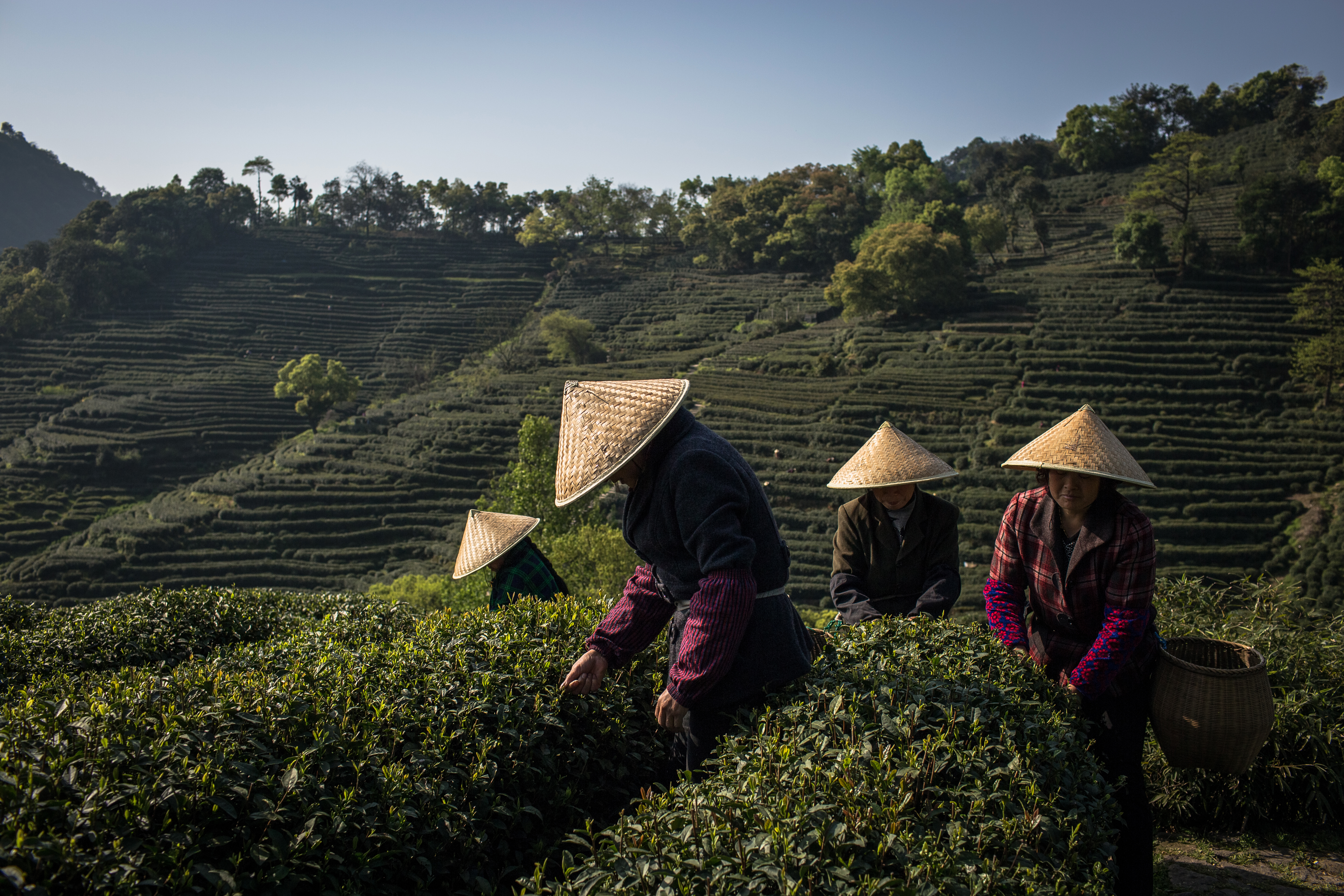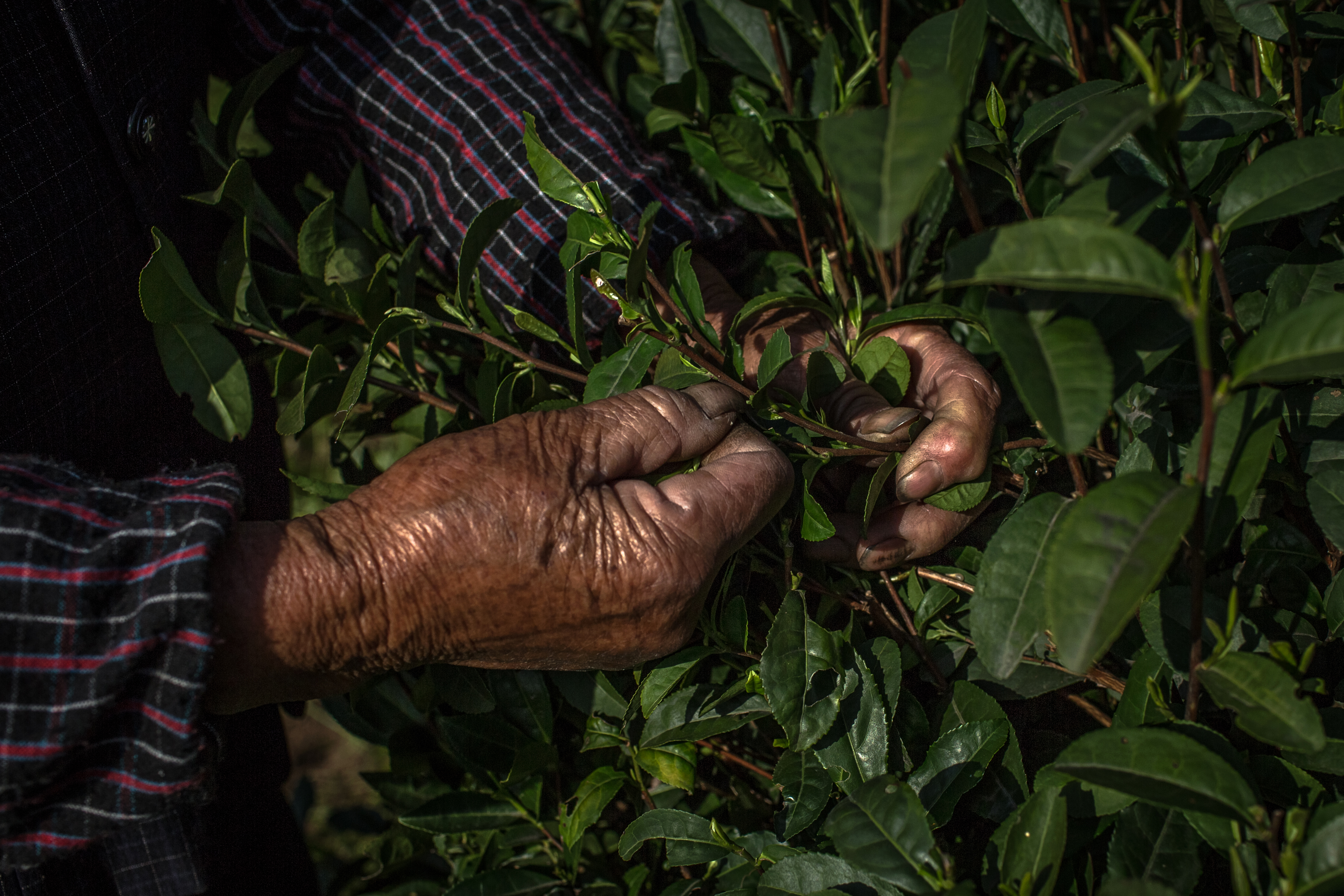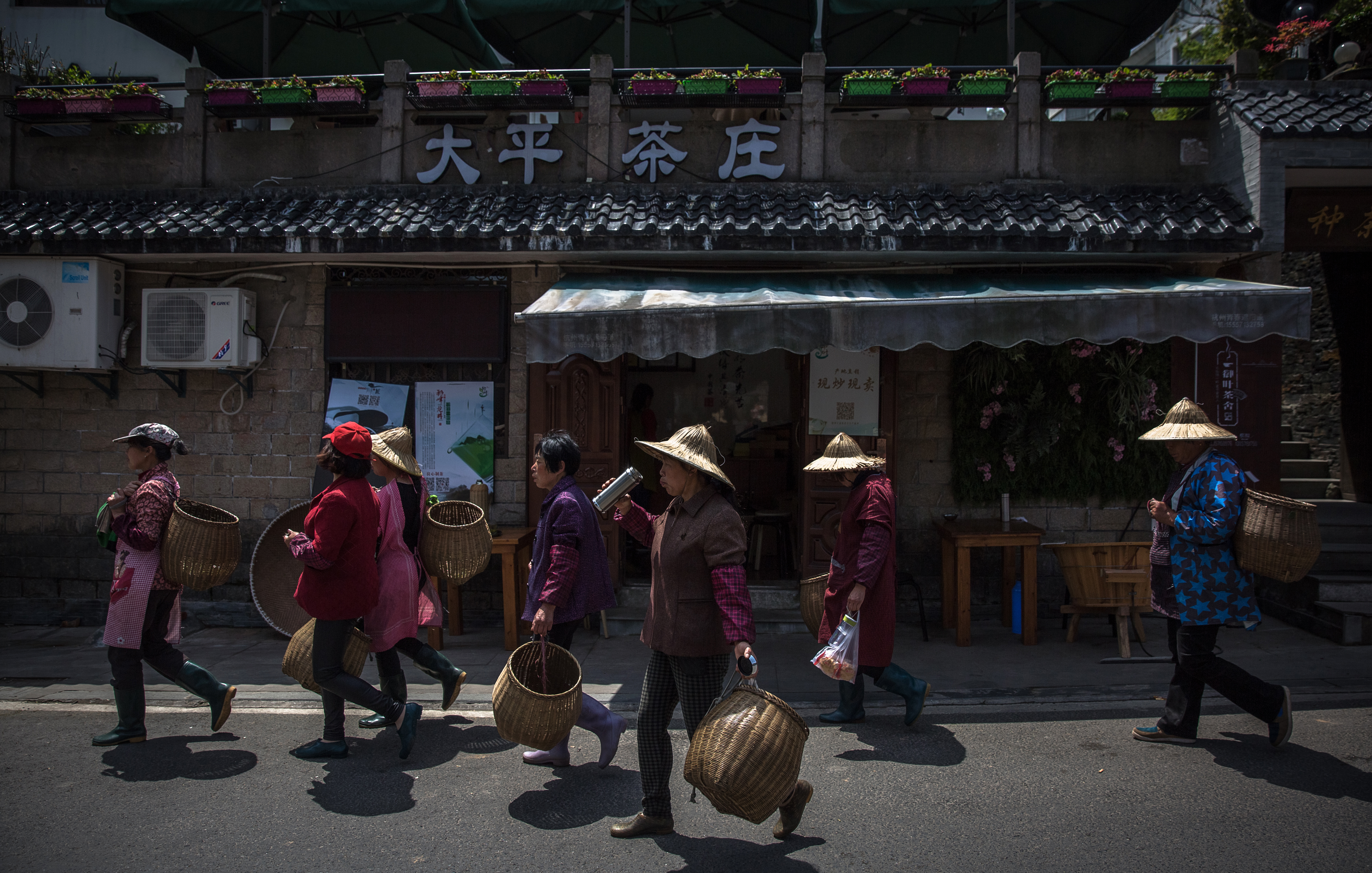The wizards of Chinese tea
A look at the painstaking process behind China's most beloved tea variety



(EPA/ROMAN PILIPEY)Things are different today, of course — Kenya is now the world's leading tea exporter, with China and Sri Lanka not far behind. But China continues to produce (and consume) more tea than ever before. And no variety is more beloved in China than green tea.All varieties of Chinese tea come from a single plant called the camellia sinensis. So what makes green tea different than black tea, or jasmine tea? It's all about the way the plant is harvested and processed, along with climate and other environmental factors. So black and red teas, for example, go through an open-air fermentation process that oxidizes the liquid and turns it a darker shade with a maltier flavor. Green tea, on the other hand, is unfermented and thus retains its natural color and springier taste.

(EPA/ROMAN PILIPEY)Hangzhou, the capital city of the country's eastern Zhejiang province, is home to the "Lamborghini of China's green tea market" — the prized longjing tea, also referred to as Dragon Well. A single ounce of Hangzhou's finest longjing can cost anywhere from $15 to $100, and with good reason: Its leaves are processed primarily by hand in a long, labor-intensive process by highly trained harvesters from all over the country.

(EPA/ROMAN PILIPEY)Longjing leaves are harvested at the beginning of spring, starting in late March and stretching into April, which gives the tea a distinctly fresh, vegetable-like taste.With baskets strapped to their backs, harvesters walk the rows of waist-high bushes, plucking the ripe leaves and buds from each stem using a technique that minimizes oxidation. A seasoned tea connoisseur can taste the difference between leaves harvested by experienced professionals and those picked by the amateur or careless.

(EPA/ROMAN PILIPEY)The daily harvesting window is short. Harvesters begin plucking before dawn and stop before the high sun rises and threatens to dry the leaves too early, which could lead to a faded, muddier-tasting tea. Before mid-afternoon, each harvester has picked about a pound or so of leaves, which are then taken indoors to begin processing.While darker teas undergo a period of fermentation before being roasted or withered to dry, longjing green tea leaves must be pan-roasted immediately after being plucked; the longer they sit raw, the more oxidized they become.


(EPA/ROMAN PILIPEY)At many Hangzhou plantations, especially the smaller family operations, tea is still roasted by hand: Workers pour the leaves into large iron pans and manually roll the leaves around the heated metal, occasionally testing them to see if they're thoroughly dried. The constant motion of the leaves in the wok is what gives the longjings their distinct, tubular shape. And, together, the heat and motion give the tea its dry, nutty flavor.Some farms have transitioned to automated roasting, which can speed production by a factor of 10. But these machines can often leave more portions of the batch burnt; a human eye can better identify precisely which leaves are done roasting and remove them one by one.

(EPA/ROMAN PILIPEY)Finally, the roasted leaves are manually separated by size, shape, and any other variations in texture. Once sorted, the dried tea leaves are packaged into tin boxes for sale.Because of the drawn-out process of producing longjing and the relatively short window of time when the leaves can be picked, many plantations produce only a few hundred pounds of quality longjing tea per season — which contributes to its high price tag and cultural adoration nationwide.



A free daily email with the biggest news stories of the day – and the best features from TheWeek.com
Kelly Gonsalves is a sex and culture writer exploring love, lust, identity, and feminism. Her work has appeared at Bustle, Cosmopolitan, Marie Claire, and more, and she previously worked as an associate editor for The Week. She's obsessed with badass ladies doing badass things, wellness movements, and very bad rom-coms.
-
 Why is Trump’s alleged strike on Venezuela shrouded in so much secrecy?
Why is Trump’s alleged strike on Venezuela shrouded in so much secrecy?TODAY'S BIG QUESTION Trump’s comments have raised more questions than answers about what his administration is doing in the Southern Hemisphere
-
 Vance’s ‘next move will reveal whether the conservative movement can move past Trump’
Vance’s ‘next move will reveal whether the conservative movement can move past Trump’Instant Opinion Opinion, comment and editorials of the day
-
 Why recognizing Somaliland is so risky for Israel
Why recognizing Somaliland is so risky for IsraelTHE EXPLAINER By wading into one of North Africa’s most fraught political schisms, the Netanyahu government risks further international isolation
